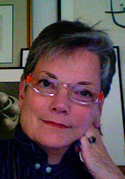 |
→ April 2007 Contents → Feature
|
Photojournalist as Tourist in North Korea
April 2007
|
 |
|
If one is tempted to think photography isn't important – witness North Korea.
Photojournalists are not welcome and their attempts to obtain a visa are rejected, as were those of Yannis Kontos. He tried for three years to travel to North Korea as a professional photographer. He wrote in his November 2006 Dispatch [http://www.digitaljournalist.org/issue0611/dis_kontos.html] that his luck changed when he traveled as a tourist. But tourist cameras are also restricted to choreographed events and sites.

North Korean students gather outside the Victory subway station in Pyongyang.
"Almost 80 percent of my pictures were taken in secret using several different methods to avoid the attention of my minders. Frequently acting and feeling like a spy using my camera's self-timer, most of the time I was shooting without looking at the viewfinder, even from inside a bus or a train. I managed to catch the mood of the country and little by little I collected enough material for a story. Every night, I was downloading my pictures in secret to my MP3 player, unbeknownst to my roommate. …
"Most of the time [the cameras] were hidden in my bag and I was able to take them out freely only when I was in a sightseeing location. Although, even in front of the Great Leader statue, where we were obliged to bow, a North Korean guide declared how the monument had to be photographed: 'When you take photographs of the statue of Kim Il-Sung you must include it all in the picture – no side pictures, no pictures from behind.'"
The Democratic People's Republic of Korea was created by the Soviet Union in 1945 after WWII when the defeated Japanese lost control of the Korean Peninsula. The new country stood opposed to the other new country, South Korea, backed by the United States: two states manufactured during the Cold War.

The Mansudae Grand Monument on Mansu Hill in Pyongyang, where North Koreans pay their respects to Great Leader Kim Il-Sung.
The Great Leader's son, Kim Jong-Il, is now the misnamed "Gentle Leader." He rules with oppressive efficiency over the alternate reality which is North Korea.
The images of Yannis Kontos testify to the effects of a totalitarian government on a population and nation frozen in time. Uniforms are everywhere (apparently 20 percent of the men aged 17–54 are in the armed forces). The human spirit does come through in a few images but beautiful traditional gowns worn for tourists, garish propaganda posters and art contrast sharply with the large gray buildings, wide gray squares and gray streets. Looming over all are statues, images – even required portrait pins – showing The Great Leader. Paintings of Kim Jong-Il now join those of his father. In Pyongyang, the capital, in particular, mammoth monuments to Kim Jong-Il and the Workers' Party overwhelm the landscape. In the countryside the rich green landscape softens the vistas. People go about their daily lives but one sees hints of a degraded standard of living. Amidst city and country Kontos keeps his sense of humor and leavens the prospect with juxtapositions and caught visual oddities. These often serve to point out uniformity or other sought-after North Korean virtues.
John Morris wrote about one image in Kontos' new book, "Red Utopia: Photographs of North Korea," published and available in Europe: "On May Day 2005, Yannis Kontos made a picture of a North Korean man patriotically striking at a replica of an American soldier. The North Korean man was blindfolded. This reminds us that North Koreans know as little about us as we do about them. Each side is fearful of the other. For that reason alone, these photographs are enormously important. …."
All media in the country are strictly controlled. According to Reporters Without Borders, North Korea is the world's worst violator of press freedom; incredibly, all radio and TVs are pre-tuned to government stations. Smuggled films and these images by Yannis Kontos show the unreported and unseen everyday life, including famines.
Photography is a risky business in the closed society. Thanks to Yannis Kontos we have some idea what the society looks like. View The Yannis Kontos Gallery
Yannis Kontos' new book, "Red Utopia," has just been published in Europe. Kontos was born in Greece where he studied photography. He received his MA degree in Photographic Journalism at the University of Westminster in London, where he studied on a Greek state scholarship. He has been a freelance photojournalist since 1992 and has gained international recognition in the field of photojournalism. Kontos has collaborated with the French-based Sygma and Gamma international agencies, and with the U.S.-based Polaris Images from its inception. He has undertaken lengthy international assignments covering the world's most important events. Over the last decade, Kontos has covered the recent wars in Kosovo, Afghanistan and Iraq, as well as all the major stories around the globe. He has received 19 awards to date, including first prizes in the World Press Photo Competition, LIFE magazine's Alfred Eisenstaedt Awards, Pictures of the Year, NPPA's "The Best of Photojournalism" and he was twice awarded as European Press Photographer of the Year. His work has been shown at exhibitions and published internationally.
Please see Kontos' Dispatch (above) and his images in Newsweek.
His Web site is: yanniskontos.com.
© Marianne Fulton
|
|
Back to April 2007 Contents
|
|